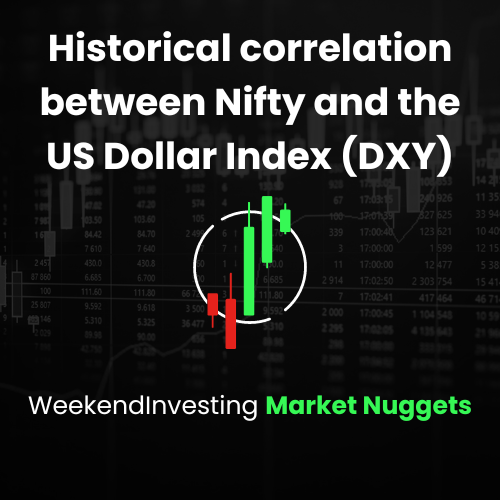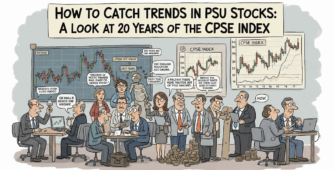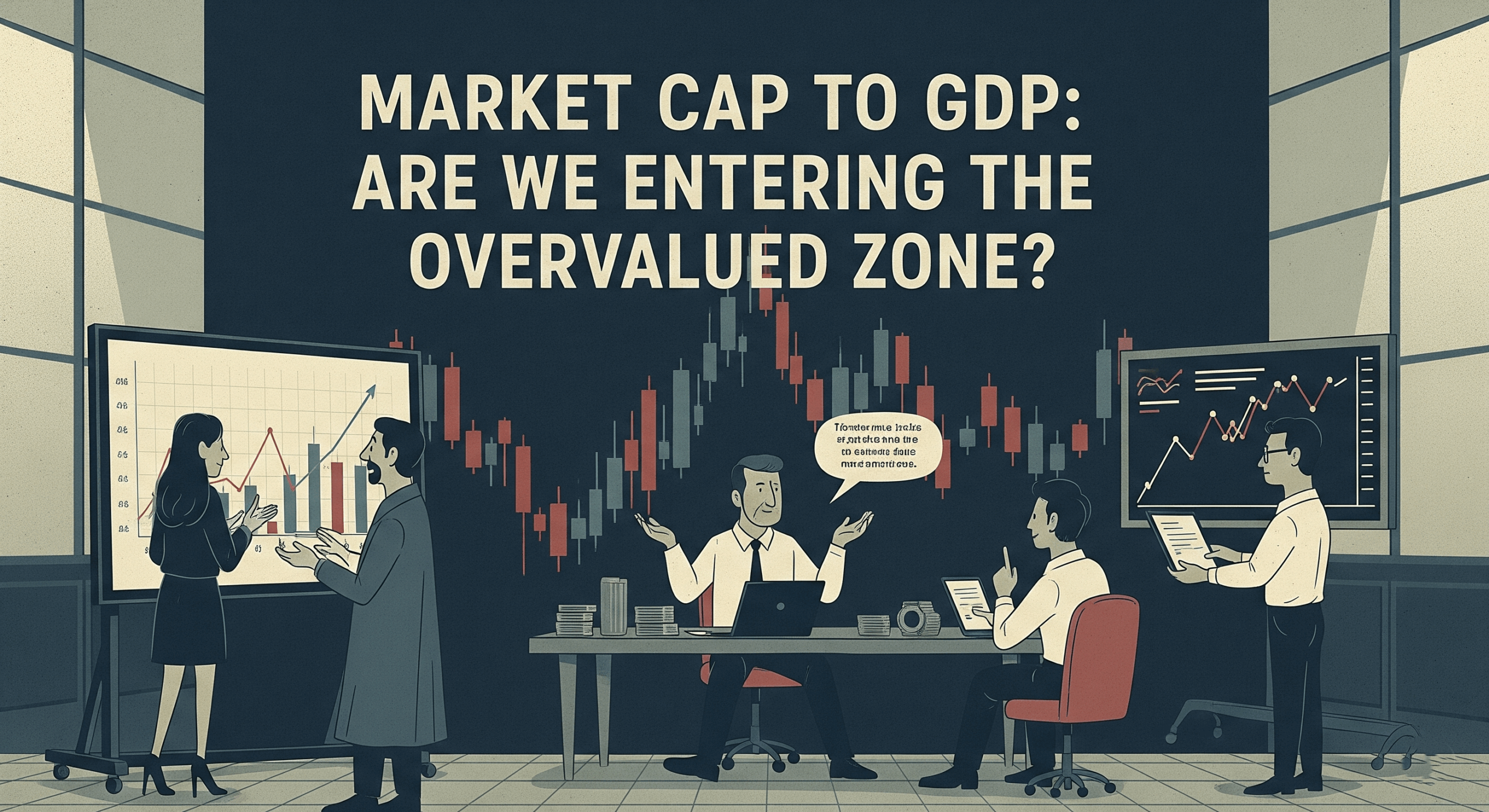The US dollar index is a key economic tool that measures the value of the US dollar relative to a basket of other major currencies, including the Canadian dollar, British pound, Swedish kronor, Swiss franc, euro, and Japanese yen. It serves as an indicator of the overall strength or weakness of the US dollar against these currencies.
In recent times, the US dollar index has been on the rise, defying expectations and surprising market participants who anticipated a decline. As curious students of the markets, we find it interesting to explore the significance of the US dollar index and its correlation with other asset classes, particularly the Nifty index.
To understand the implications of the US dollar index, it’s important to grasp the concept of valuation. When the dollar index is at 120, it suggests that the US dollar is overvalued by 20% compared to the basket of currencies. Conversely, when the dollar index is at 90, the dollar is considered undervalued. This contextual understanding helps us interpret the implications of the US dollar index movements.
The correlation between the US dollar index and different asset classes is strong, meaning that changes in the index tend to have a significant impact on other markets. For instance, when the US dollar index experiences a notable movement, emerging markets tend to be adversely affected, or at the very least, they stop showing significant upward momentum. Precious metals, other currencies, and equity markets also tend to respond to these movements.
Let’s take a closer look at how the Nifty index, a key benchmark for the Indian stock market, has reacted historically to movements in the US dollar index. By examining past instances where the dollar index performed well, we can draw some insights.
For instance, between 2021 and 2022, the dollar index rose from 90 to 114, indicating a strong performance. During this period, the Nifty index remained relatively flat. Similarly, during the 2008 financial crisis, when the dollar index climbed from 71 to 94, the Nifty index experienced a significant collapse. However, there have been instances where the Nifty index managed to perform well alongside a strong dollar index, albeit with less dramatic gains.
The correlation between the Nifty index and the dollar index suggests that when the latter is strong, the former does not typically experience significant upside movements. This is expected because a strong dollar usually leads to capital flowing out of emerging markets and into the US market. As the dollar strengthens, investors seek higher yields and prefer to move their investments to safer havens, away from currencies that are rapidly depreciating against the dollar.
Let us take a look at many such phases when the DXY surged resulting in a rangebound or a bearish move in Nifty
Example 1 : Sep 2021 to Sep 2022
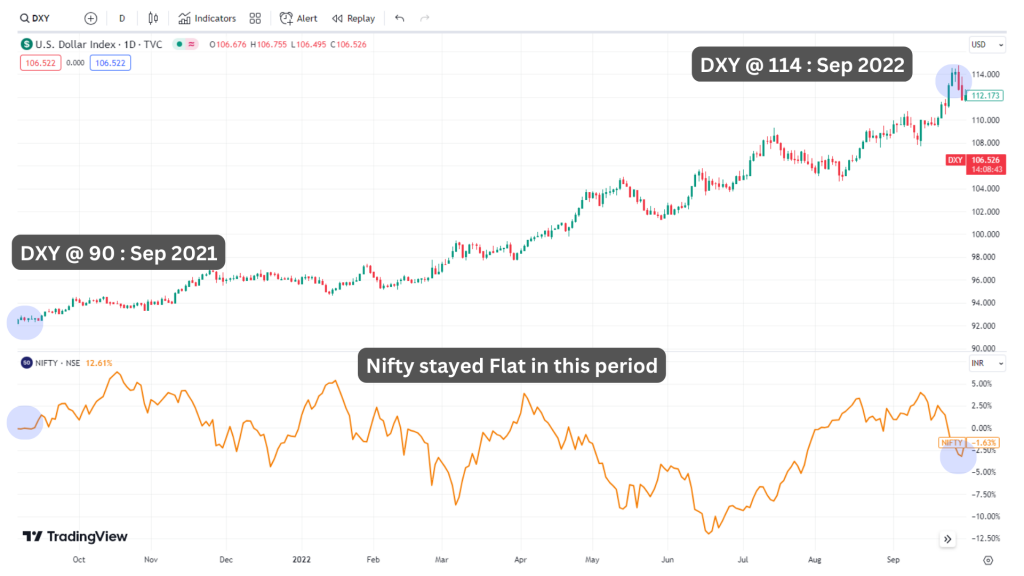
Example 2 : July 2014 to Dec 2015
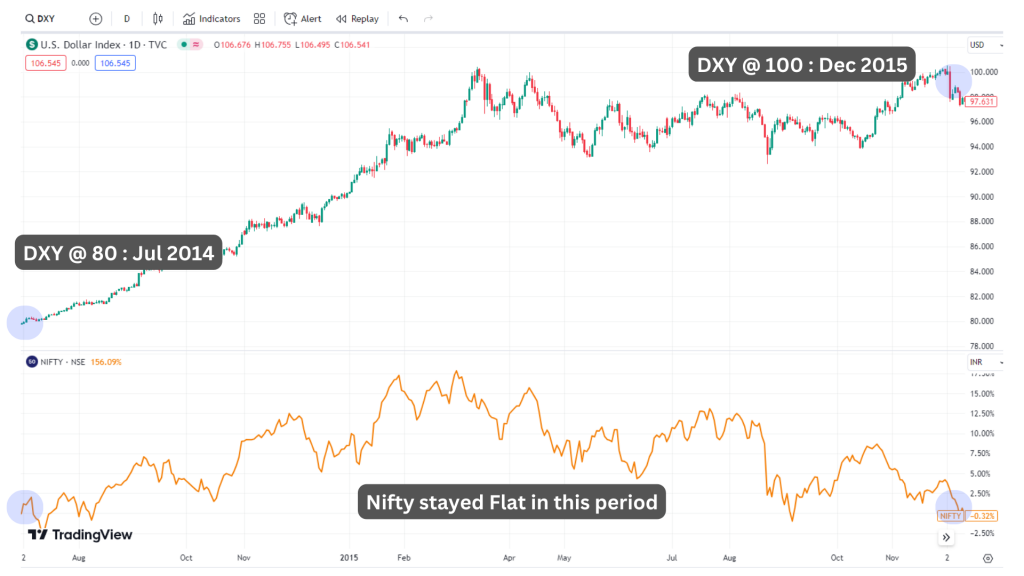
Example 3 : Nov 2009 to Jun 2010
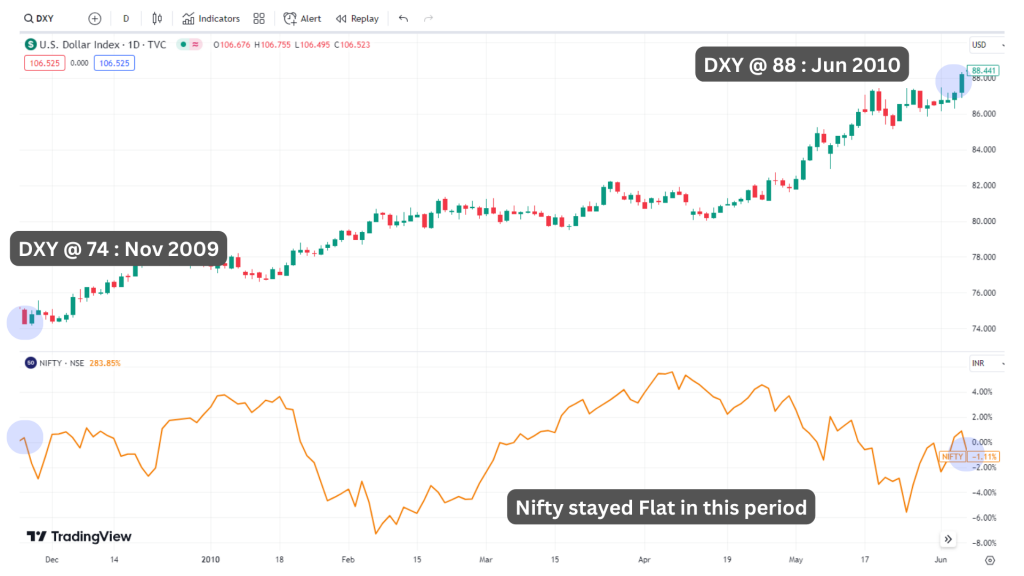
Example 4 : Mar 2008 to Nov 2008
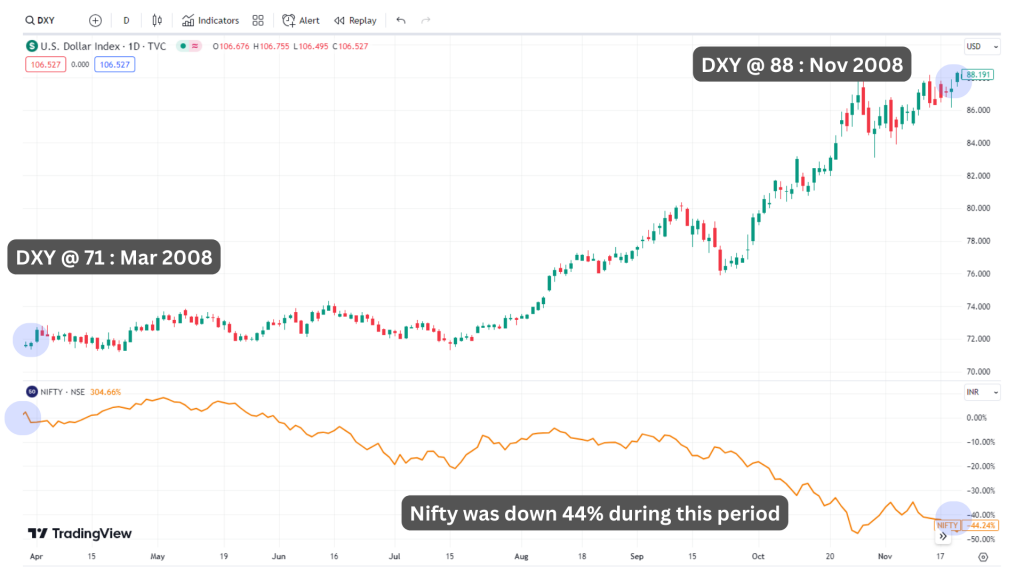
Example 5 : Dec 2008 to Mar 2009
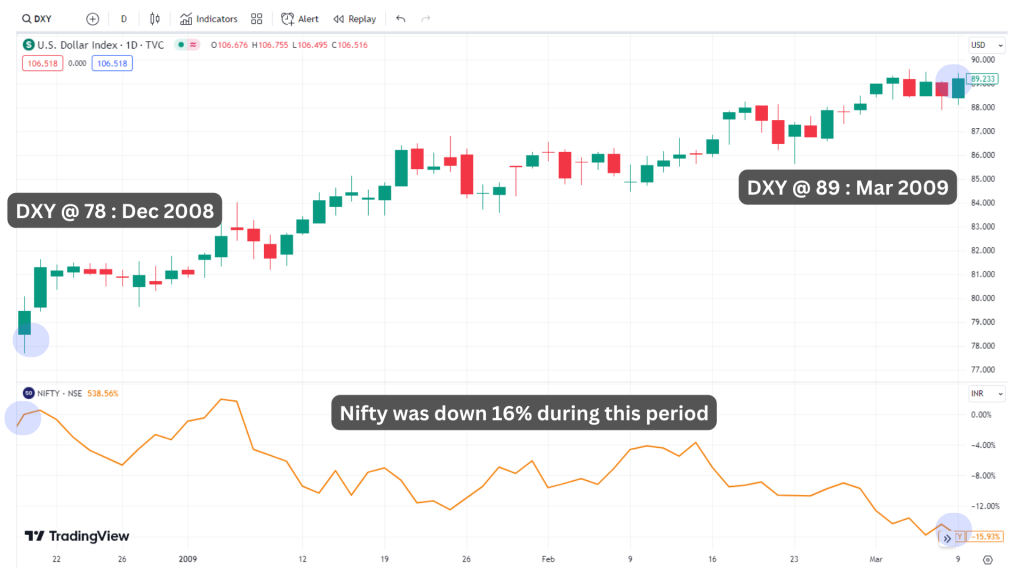
Example 6 : Mar 1995 to Sep 2001
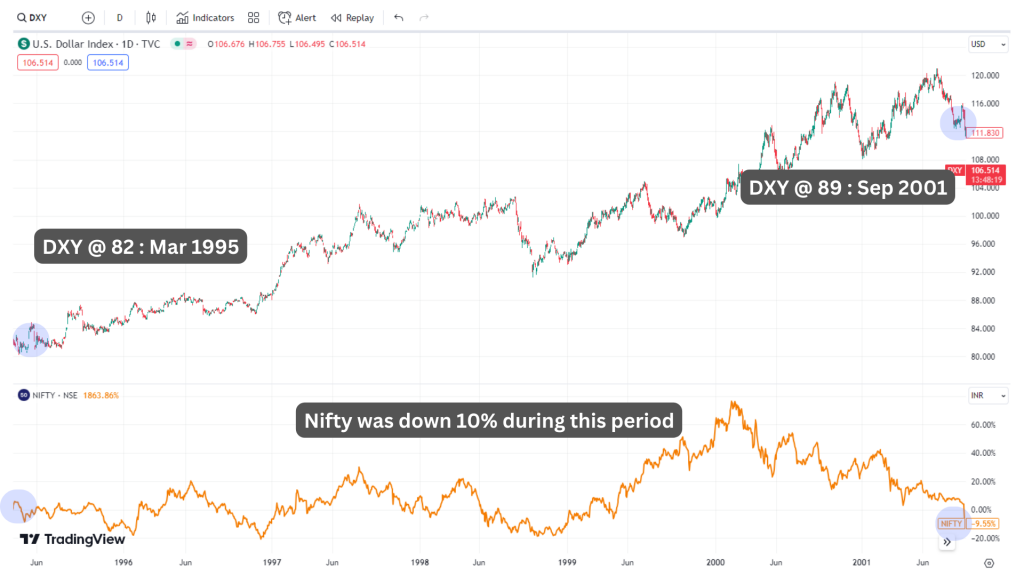
Conversely, when the dollar index experiences significant downward movements, it tends to have a positive impact on emerging markets. For instance, between 2002 and 2008, when the dollar index dropped from 120 to 76, the Nifty index surged by seven times. These periods of dollar index depreciation often coincide with periods of explosive growth in emerging markets.
Example 7 : Feb 2002 to Jan 2008
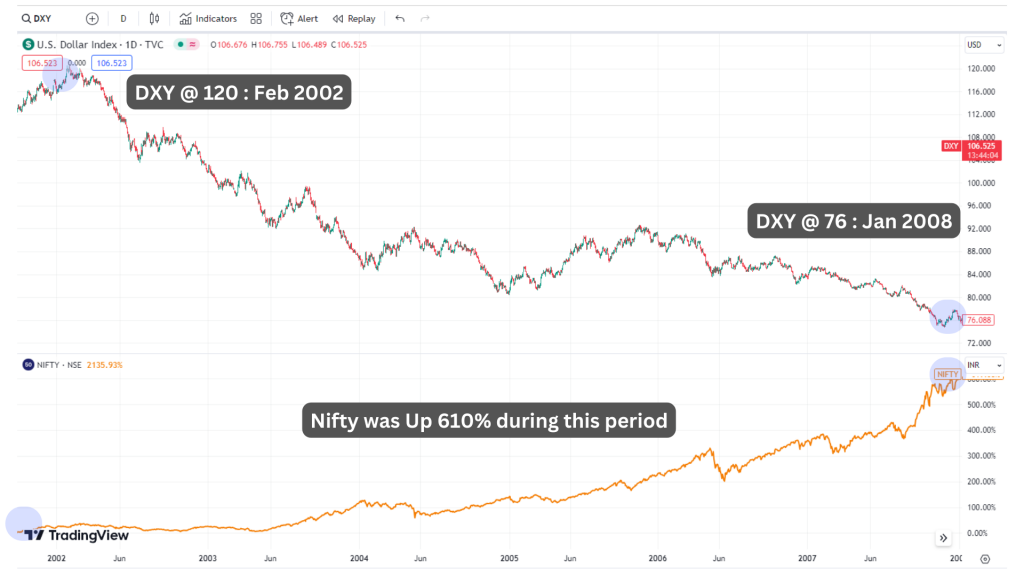
The current trend of the dollar index gradually rising since 2008 suggests that we may be nearing the next significant explosion in emerging markets. When the dollar index eventually tops and begins its downward trajectory, it could mark a pivotal period of three, four, or even five years of remarkable growth and opportunities in emerging markets.
The US dollar index serves as a barometer for the overall strength of the US dollar, and its movements have significant implications for other asset classes. While a strong dollar index often hinders the upside potential of emerging markets, a declining dollar index tends to ignite explosive growth in these markets.
Download the WeekendInvesting App

If you have any questions, please write to support@weekendinvesting.com

